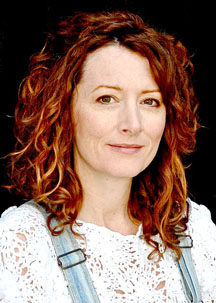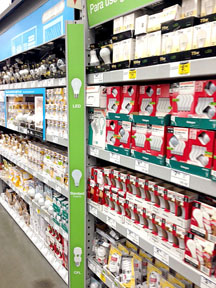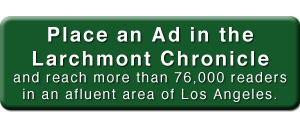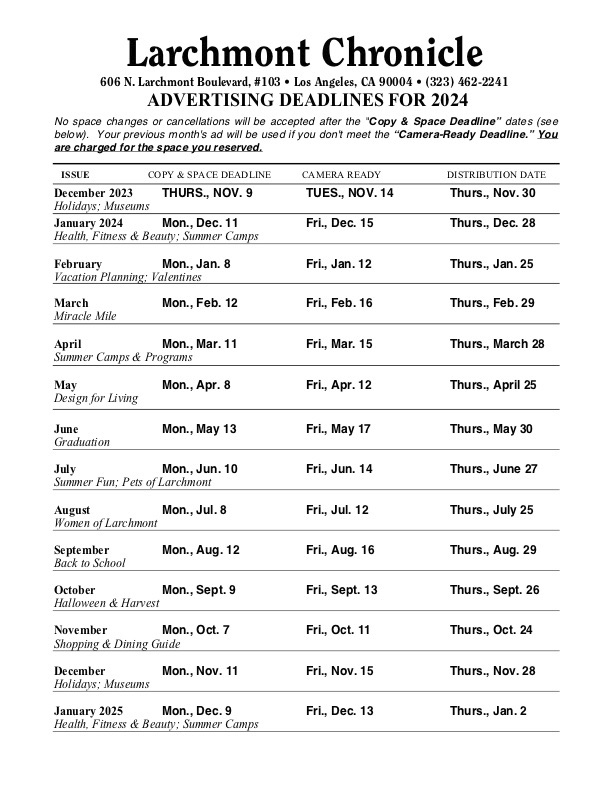Lesson in lighting choices take you out of lightbulb limbo
 California Greenin’ by
California Greenin’ by
Renee Ridgeley
In retrospect, God had it easy when he proclaimed “Let there be light.”
Creating the sun was a simple decision compared to staring at a giant wall of light bulbs at the hardware store. Watts, volts, kelvins, lumens, mercury vapor, filaments, diodes!?! Our worst fears might be realized if we make the wrong lighting choice and are sent to eco-hell.
Perhaps, a lesson in illumination might save us from the darkness.
Genesis. In the beginning there were incandescent bulbs, the first commercially successful electrical lights.
These bulbs work by passing electricity through a filament which heats and glows. Unfortunately, most of that electricity goes into heating and not lighting.
Great if you’re making cupcakes in Easy Bake Ovens which use incandescent bulbs to cook ingredients. Bad if you want to efficiently convert electricity to light instead of wasting 95% of it creating heat.
Exodus. The wastefulness of incandescent bulbs is so great that numerous countries banned them long ago. The U.S. has been phasing them out since 2007. The Energy Independence and Security Act of 2007 forced manufacturers to create bulbs that have a 25 percent greater efficiency by 2014 and 200 percent greater efficiency by 2020.
As technology to replace incandescent bulbs becomes more advanced, the hot, wasteful and quite lovely light of these bulb seems out of time. Tasting fruit from the tree of knowledge, has made it harder to look at an old bulb without seeing its nakedness.

VARIETY of choices suggest a lesson in illumination is in order.
Revelations. Behold the Energy Star certified bulbs: compact fluorescent lights (CFL) and light-emitting diode lamps (LED). CFL bulbs work by passing electricity through mercury vapor which then bounces off phosphor and glows.
LEDs work by passing electricity into a two-lead semiconductor where the current flowing over the components of the diode causes electrons to release photons. Warning: an actual engineering degree is required for LED comprehension beyond this point.
Both CFL and LED bulbs come in a variety of brightness and hues while saving energy, maintenance and money.
If you’re trying to stay out of darkness and get your name in the Book of Light, here are some quick comparisons to consider when buying light bulbs:
Amount of electrical energy converted to light:
Incandescent – 5%CFL – 75%
LED – 80%
Lifespan:
Incandescent – up to 2,000 hours
CFL – up to 15,000 hours
LED – up to 30,000 hours
Lumens (brightness) per watt:
Incandescent – 10 to 17
CFL – 40 to 70
LED – 40 to 100
Price per bulb:
Incandescent – inexpensive
CFL – moderate
LED – Expensive (note: prices are dropping as manufacturing becomes competitive)
A smart choice in the lighting section might take you out of light bulb limbo and put you on the path to some heavenly light.
Energy Star Certified Bulbs: energystar.gov/products/certified-products/detail/light-bulbs
Clean Energy Resource Teams Right Light Guide: cleanenergyresourceteams.org/sites/default/files/CERTs_RightLightGuide_2014.pdf
Category: Real Estate


